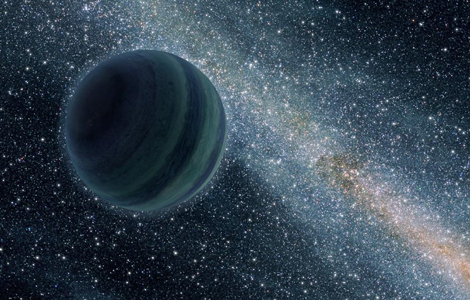Life on a Rogue Planet
Planets with no host stars wouldn’t be very hospitable, but life might still find a way to hang in
A “rogue” exoplanet with the preliminary name PSO J318.5-22 has been detected by a group of astronomers led by Michael Liu from the University of Hawaii at Manoa. By “rogue planet,” astronomers mean one that has no host star – it wanders alone through galactic space.
This particular world is a Jupiter-type gas giant, located about 80 light years from Earth in a collection of young (less than 50 million years old) stars in the Beta Pictoris moving group. With only about six times the mass of Jupiter, PSO J318.5-22 is one of the least massive rogue planets detected so far. It’s a sub-brown dwarf, even less massive than a brown dwarf (a gas giant that failed to become a star).
Radiation levels within this type of planet are very high, with a seamless transition from gas to liquid in the deep atmosphere. Convection would move any organic compounds at the surface down into the interior, where they would encounter extreme temperatures and pressures. Thus, life within a gas giant like PSO J318.5-22 has to be considered extremely unlikely. But the rogue planet could be accompanied by a large moon, whose subsurface could be a potential abode of life.
The discovery gives credence to the notion that rogue planets might be very common. By some estimates, there could be as many as 100,000 of these nomads for each star in our galaxy!
According to current theories about solar system formation, small, rocky planets sometimes come close to very large planets in the chaotic early stages before their orbits stabilize. Such close encounters could potentially hurl the smaller planets out of the solar system entirely, leaving them to wander the galaxy as nomads. In fact, the Mars-size object that collided or had a near-collision with the early Earth (resulting in our unusually large Moon) is thought to have become a rogue planet.
Any planet bumped in this way from its original solar system might be very Earthlike, and life could already have taken hold. Once ejected, the atmosphere would freeze to the surface. However, heat from radioactivity in the core could provide enough energy to keep an ocean of water beneath the icy surface. And it’s distinctly possible that unicellular life and even subsurface life at hydrothermal vents could develop on this kind of “Steppenwolf planet.”
Under certain conditions, an ice layer might not even be necessary. A thick atmosphere of molecular hydrogen could provide enough pressure and insulation to keep liquid water on the surface, if the atmosphere had 100 to 10,000 times the pressure of Earth’s and the planet was ejected quickly. In that case, once again, the planet might retain primitive forms of life.
Thus, even if a planet loses its star, it doesn’t mean necessarily that it loses its inhabitants. Life can find many ways to persist.
/https://tf-cmsv2-smithsonianmag-media.s3.amazonaws.com/accounts/headshot/Dirk-Schulze-Makuch-headshot.jpg)

/https://tf-cmsv2-smithsonianmag-media.s3.amazonaws.com/accounts/headshot/Dirk-Schulze-Makuch-headshot.jpg)